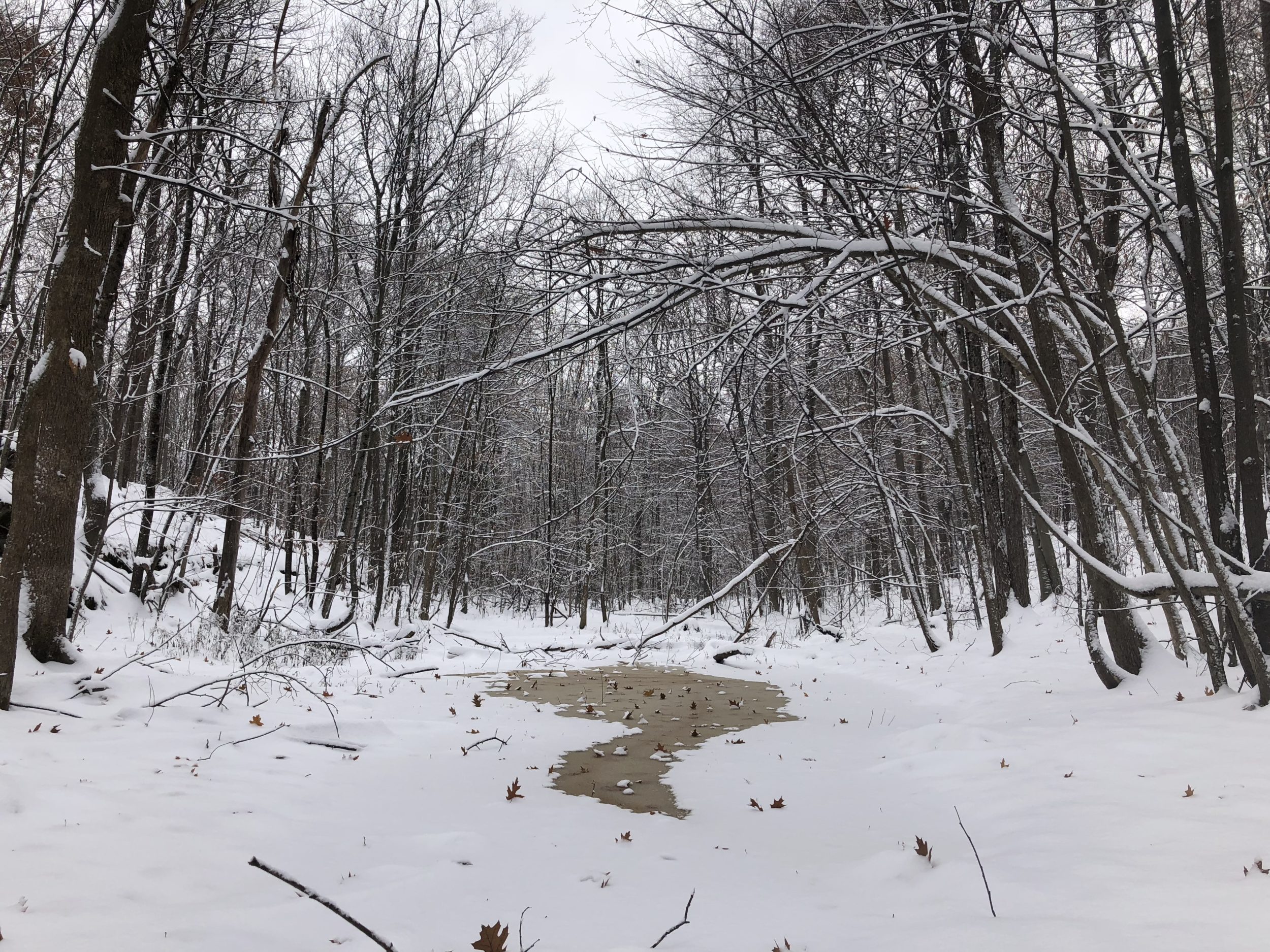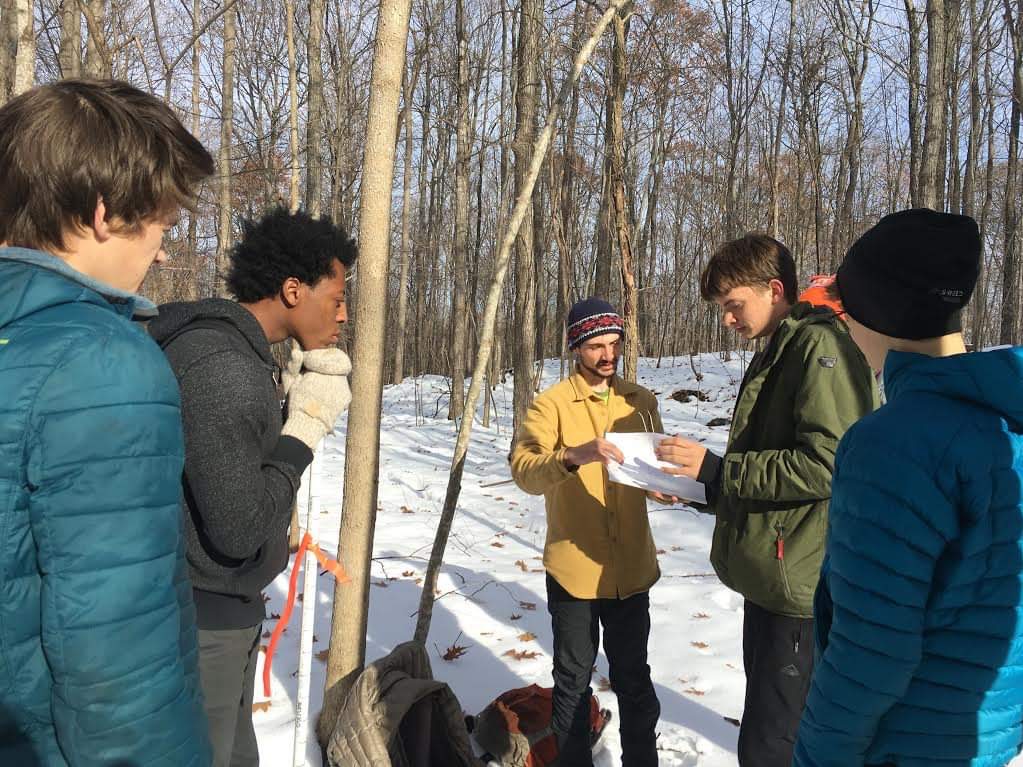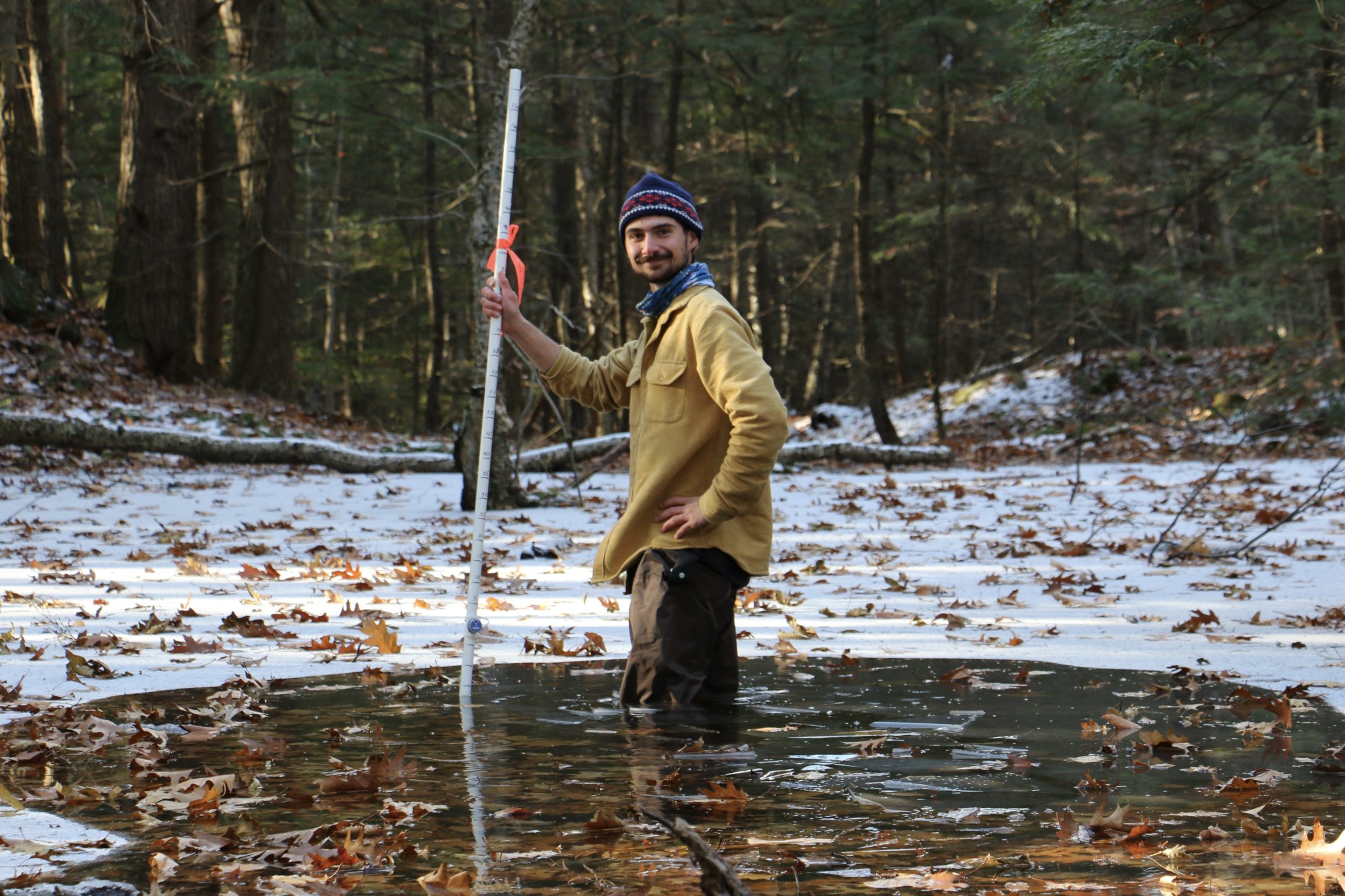
This frozen vernal pool in Bridport will be monitored in spring 2019 as part of the Vermont Vernal Pool Monitoring Project. / © Alex Wells
Picture a vernal pool in your mind’s eye and you’re instantly swept away to springtime. Winter snows liquefy and meltwater collects in shallow pockets on the forest floor, followed closely by heaving crowds of spotted salamanders and quacking choruses of wood frogs. It’s in the name itself: vernal—relating to, or occurring in the spring. However, it’s the drying, freezing, and refilling that take place over the rest of the year that allow this unique burst of life to flourish each spring.
Because they dry up during most summers (though not necessarily all), vernal pools cannot support fish populations, thus creating a safe haven for amphibious breeders whose young are extremely vulnerable to fish predation. What’s more, other species have life cycles that not only take advantage of the wet-dry cycle, but are totally reliant upon it.
For instance, eggs of the fairy shrimp must both dry out and be exposed to winter temperatures if they are to hatch in spring. Marbled salamanders—whose range stops just south of Vermont’s border with Massachusetts—don’t lay their eggs when vernal pools are full, but instead wait until summer’s end when water levels reach their lowest point. Nests have to be positioned in just the right zone in pools to succeed: too near the bottom, and the slightest rain could cause the eggs to hatch but then evaporate away, leaving developing larvae high and dry; too high, and the nest might not be inundated until spring, leaving eggs vulnerable to harsh winter conditions.
Akin to marbled salamanders, citizen scientists with the Vermont Vernal Pool Monitoring Project (VPMon) have visited off-season vernal pools over the past few months as VCE prepares for our first full season of data collection next spring. We kicked off VPMon earlier this year with a mission to engage citizen scientists to annually collect vital data from vernal pools across the state. By establishing and maintaining a baseline dataset, conservationists, regulators, and interested citizens will be able to recognize future changes and take action to conserve Vermont’s vernal pools.

VCE’s ECO Americorps VPMon Coordinator Alex Wells and Middlebury College students setting up monitoring equipment at a vernal pool in Bridport, VT. / © Kate Talano
Vital information to be collected includes water temperature and hydroperiod—how long water lasts in the vernal pool each year—which we monitor using a hardy device called a HOBO Water Temperature Data Logger attached to an equally hardy PVC pipe. This apparatus is lodged into the deepest point in a vernal pool, and is usually easiest to set up in fall when pools aren’t inundated with several feet of water or several inches of ice, as they will be in early spring. At least that’s usually the case… but this fall was so wet and winter so early that a few VPMon volunteers and I recently found ourselves standing up to our thighs—or deeper!—in icy vernal pools.
Despite the cold, VPMon’s citizen scientists haven’t shied away from getting out with me to set up equipment at their adopted vernal pools. In mid-November, I left VCE’s warm, dry office behind and set off on a grand VPMon tour across southern and central Vermont. Never in conditions above freezing, vernal pool monitors and I filled out data sheets and set up HOBO loggers on pool bottoms. In less than a week, we added six new pools to the roster, almost doubling the number of pools ready to be monitored next spring, in Year 1 of what VCE plans to be a long-term study.
If you’re curious about VPMon you can learn more here! We’re always looking for passionate citizen scientists willing to monitor a pool in the spring (and perhaps a little in the fall too).

